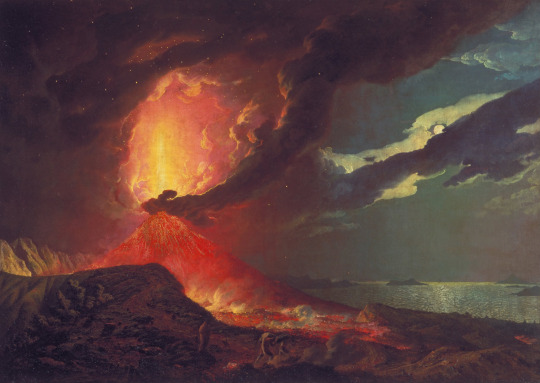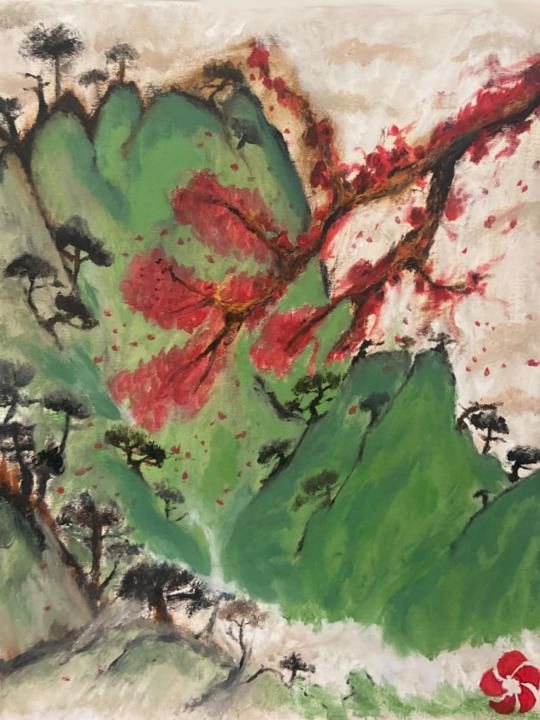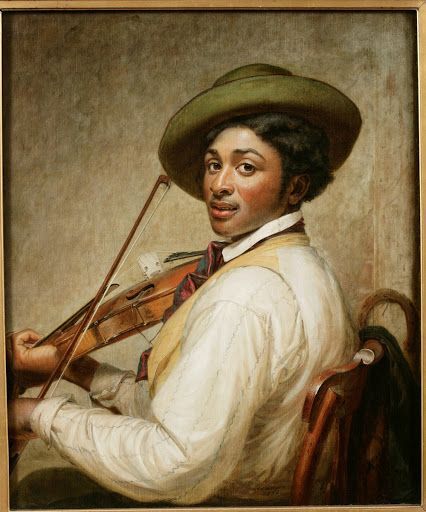#mounted canvas
Explore tagged Tumblr posts
Text

The Lantern Bearers, Maxfield Parrish, 1908
#art#art history#Maxfield Parrish#genre painting#genre art#illustration#Collier's Magazine#American art#20th century art#oil on canvas mounted on cardboard#Crystal Bridges Museum of American Art
2K notes
·
View notes
Text

Maiden by Robert Duxbury
133 notes
·
View notes
Text

Horace Vernet (1789-1863) "The Vesuvius Erupting, the Artist and His Father, Carle Vernet, in the Foreground" (c. 1822) Oil on canvas Located in the Museum of Fine Arts, Houston, Texas, United States
#painting#paintings#art#artwork#landscape#horace vernet#oil on canvas#fine art#museum of fine arts#museum#art gallery#french artist#volcano#mountains#mountain#fire#male portrait#portrait of a man#clothing#clothes#mount vesuvius#1820s#early 1800s#early 19th century
72 notes
·
View notes
Text








more x/twitter and strawpage doodles
you can send prompts and doodles here (answered on twt) -> https://filialdisciple.straw.page/
»—————————–✄
#rotmhs#rotbb#return of the mount hua sect#return of the blossoming blade#chung myung#cheong myeong#baek cheon#jin geumryong#tang zhan#tang pae#nobody on twt told me that i had the canvas flipped for the goddess cm prompt but i fixed it here lmfao#tin draws
67 notes
·
View notes
Text

The Return of Orpheus
Artist: Sidney Harold Meteyard (English, 1868-1947)
Date: n. d.
Medium: Oil on canvas
Collection: Private collection
Description
The Return of Orpheus represents not only a seminal work by a rare artist but more importantly it holds the distinction of being the first painting purchased for the collection. As such it must be judged not just for its artistic merit but also as the piece that inspired a passion for collecting that continues to this day.
Orpheus is shown at the mouth of a cave, the entrance to the Underworld. The fading autumn leaves around him suggest that he has failed in his quest to retrieve his bride Eurydice, who had died shortly after their wedding after treading on a nest of vipers.
#mythological art#painting#mount olympus#the return of orpheus#oil on canvas#artwork#fine art#oil painting#pre raphaelite art#foliage#greek mythology#cave#autumn leaves#olive wreath#drapery#pre raphaelite brotherhood#english culture#english art#sidney harold meteyard#english painter#european art
50 notes
·
View notes
Text

#Jack Whitten#xeroxed#xeroxed! III#1975#Toner and rice paper mounted on stretched canvas#153.7 x 202.2 cm / 60 1/2 x 79 5/8 in
80 notes
·
View notes
Text

The Agony in the Garden
Artist: Garofalo (Benvenuto Tisi) (Italian, 1481-1559)
Date: ca. 1524-1526
Medium: Oil on wood transferred to canvas
Collection: The National Gallery, London, United Kingdom
Description
On the night before his crucifixion, Christ went to the Garden of Gethsemane at the foot of the Mount of Olives in Jerusalem. He said his prayers; his disciples Peter, John and James fell asleep. Christ asked God, if possible, to spare him the destiny that awaited him. Eventually Christ accepted that God’s will must be done, and an angel came from heaven to strengthen and comfort him.
Garofalo depicts Christ at prayer while Judas, who has betrayed him, brings the Roman soldiers to arrest him. An angel appears in a burst of light in the night sky, carrying a Crucifix spouting blood into a chalice. This represents the spilling of Christ’s blood, which will turn into the wine of the Eucharist, and illustrates Christ’s prayer: ‘Father, if thou be willing, remove this cup from me: nevertheless, not my will, but thine, be done’ (Luke 22: 42). Christ touches his heart and gathers his cloak ready to get up and confront his destiny.
#biblical art#biblical narrative#mount of olives#agony in the garden#city#rocks#trees#jesus#garden of gethsemane#jerusalem#prayer#judas#roman soldiers#angel#crucifix#chalice#jesus's apostles#men#robe#drapery#biblical scene#christianity#christian faith#biblical#painting#oil on canvas#fine art#oil painting#art and the bible#christian art
20 notes
·
View notes
Text

Mont Sainte-Victoire and the Viaduct of the Arc River Valley
Artist: Paul Cézanne (French, 1839–1906)
Date: 1882–1885
Medium: Oil on canvas
Collection: Metropolitan Museum of Art, New York City, NY, United States
Description
The distinctive silhouette of Mont Saint-Victoire rises above the Arc River valley near the town of Aix. To paint this scene, Cézanne stood close to Montbriand, his sister’s property, at the top of the hill just behind her house; the wall of the neighboring farmhouse is barely visible. Cézanne sought to reveal the inner geometry of nature, "to make of Impressionism something solid and durable, like the art of museums." Indeed the railroad viaduct that cuts through this pastoral scene is evocative of a Roman aqueduct, recalling paintings by Nicolas Poussin.
#landscape#french impressionism#fine art#mount sainte victoire#viaduct of the arc river valley#oil on canvas#artwork#viaduct#river#hills#trees#impressionism#painting#france#farmhouse#valley#french culture#french art#paul cezanne#french impressionist painter#french painter#19th century painting#metropolitan museum of art
29 notes
·
View notes
Text

"The Trolltinden Massif" Norway, by Peder Balke, circa 1845. Norwegian artist 1804-1887. This painting is similar to Balke's "The Trolltindene Range, Norway" 1845, but the sailing ship is noticeably different. Dimensions: 30.8 x 41.9 cm / 12.1 x 16.4 in. Location: private collection (Asbjørn Lunde), New York. Image: via Daxer & Marschall. From Daxer & Marschall: "Balke’s landscape paintings are inspired by the rugged nature of northern Norway, which the artist first experienced in the autumn of 1832 when he traveled to the Finnmark region. This trip was of key importance to his further development. The impressions and motifs gathered on that trip recur continually in his later work. Balke did not strive for topographical accuracy; instead, he endeavored to produce an exaggerated image of the Norwegian landscape." "The mountains in the background...recall the Trolltinden massif. The crests of the waves in pastose white accentuate the play of the breakers, while the mighty mountain range rises surrealistically from the mist."
38 notes
·
View notes
Text

Pliny the Younger and his Mother at Misenum, 79 A.D.
Artist: Angelica Kauffmann (Swiss, 1741–1807)
Date: 1785
Medium: Oil on canvas
Collection: Princeton University Art Museum, Princeton, NJ, United States
Description
As Mount Vesuvius erupts in the distance, the young Pliny continues his studies at his family’s villa - despite being urged to flee. Meanwhile, his uncle, Pliny the Elder, is sailing toward Vesuvius and will die trying to rescue a friend. Pliny’s letters comprise one of the great records of the catastrophe that destroyed Pompeii and Herculaneum. In one, he tells of being able to "hear the wails of women, the cries of children, the shouts of men... others were reaching to the gods... others declared the gods no more."
This is one of three large-scale history paintings Kauffmann produced in Italy in 1785 for a Mr. Bowles, an English patron. As was noted when the work was first exhibited at London’s Royal Academy in 1786, Pliny has two left feet. The reason for this may be that Kauffmann, then among the most popular artists in Rome, evidently relied on her less-talented husband, Antonio Zucchi, to complete many of her commissions.
#historical art#historical scene#oil on canvas#narrative art#mount vesuvious#eruption#villa#arch#architecture#painting#artwork#fine art#oil painting#family#men#women#costume#drapery#column#misenum#pliny the younger#pliny the elder#swiss culture#swiss art#angelica kaufmann#swiss painter#european art#18th century painting#princeton university art museum
20 notes
·
View notes
Text

Purity of Heart
Artist: Pompeo Girolamo Batoni (Italian, 1708-1787)
Date: 1752
Medium: Oil on canvas
Collection: National Trust Collections, United Kingdom
Description
This is an allegorical representation of one of the eight Beatitudes, from the Sermon on the Mount. "Blessed are the pure in heart: for they shall see God" is symbolised by a woman wearing white for purity, clutching a dove to her heart, and with lilies emblematic of the Immaculate purity of the Virgin. Yet Batoni was following Cesare Ripa’s Iconologia (Rome, 1603) for its pictorial representation. It and its companion, Meekness, were probably commissioned in Rome by Sir Matthew Fetherstonhaugh of Uppark, when on the Grand Tour with his wife and some of their relatives. The idea may have come from one of the party: his clergyman brother, Utrick, subsequently Rector of Harting.
#allegorical art#painting#oil on canvas#fine art#purity of heart#the eight beatitudes#sermon of the mount#symbolism#woman#white costume#dove#lilies#angel#table#drapery#pompeo girolamo batoni#oil painting#italian painter#italian culture#18th century painting#italian art#european art#allegory
37 notes
·
View notes
Text

Vesuvius in Eruption, with a View over the Islands of the Bay of Naples, Joseph Wright of Derby, ca. 1776
#art#art history#Joseph Wright of Derby#landscape#landscape painting#landscape art#volcano#volcanic eruption#Mount Vesuvius#Bay of Naples#Italy#Italianate#British art#English art#18th century art#oil on canvas#Tate Britain
376 notes
·
View notes
Text

Portrait of Sarah Harrop as a Muse
Artist: Angelica Kauffmann (Swiss, 1741–1807)
Date: 1780–1781
Medium: Oil on canvas
Collection: Princeton University Art Museum, Princeton, New Jersey, United States
Description
Angelica Kauffmann’s portrait of the renowned singer Sarah Harrop (Mrs. Bates), arguably the artist’s masterpiece in portraiture, is a rare representation of a self-made woman, the great Handelian performer Sarah Harrop (1755–1811), by one of the very few professional women artists of the period. Kauffmann, one of two female cofounders of Britain’s Royal Academy, shows Harrop seated in the wilderness, a lyre at her side and a rolled sheet of music in her hand. The mountain, Mount Parnassos, is the home of the Muses, and the waterfall issues from the Hippocrene spring. The lyre most likely identifies Erato, the Muse of lyric poetry, and while the instrument is based on ancient types, the sheet music grounds the portrait in the eighteenth century, for it is recognizably an aria from George Frideric Handel’s opera Rodelinda, Queen of the Lombards (1725).
The picture, first exhibited at the Royal Academy in 1781, dates from around the time of Harrop’s marriage in 1780, a marriage to which she brought a substantial personal fortune made through her talents as a performer. The music hints at a personal meaning. The aria "Dove sei, l’amato bene" is sung not by Rodelinda but by her husband, whose longing words must have been chosen specifically for their personal significance in what was almost certainly a marriage portrait. That Kauffmann the artist was also married at about this time, to a fellow artist of more pedestrian talents, Antonio Zucchi, only deepens its resonance.
#portrait#landscape#muse#lyre#music sheet#female#three quarter length#artwork#oil on canvas#fine art#oil painting#sarah harrop#handelian performer#wilderness#rolled sheet of music#mount parnassos#waterfall#hippocrene spring#symbolism#pink dress#cloak#high hairdo#coiff#swiss culture#swiss art#angelica kauggman#swiss painter#european art#18th century painting#princeton university art museum
20 notes
·
View notes
Text

"Home"
Medium: oil paint
I painted how I imagined mount hua sect mountain!!🩷
#artists on tumblr#artwork#digital art#drawing#cheong myeong#chung myung#return of mount hua sect#return of the blossoming blade#rotbb#romhs#oil painting#oil on canvas#canvas painting
23 notes
·
View notes
Text

William Sidney Mount (1807-1868) "Right and Left" (1850) Oil on canvas
#paintings#art#artwork#genre painting#male portrait#william sidney mount#oil on canvas#fine art#portrait of a man#musician#musical instruments#instrument#clothing#clothes#african american#1850s#mid 1800s#mid 19th century
116 notes
·
View notes